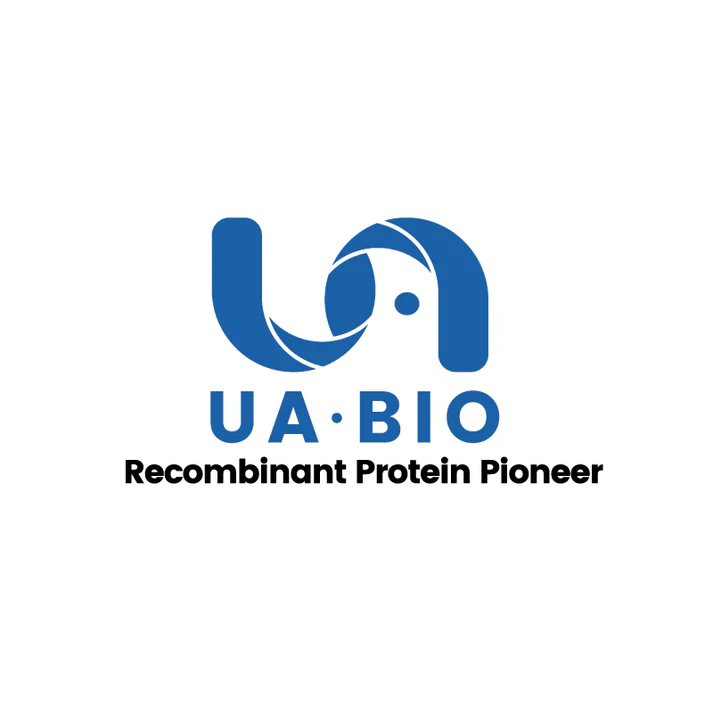In a 25ul reaction system, using PUC57 as a template, amplify the target fragment of 773bp by PCR. At the same time, add competitive enzyme to study the enzyme activity of Taq DNA polymerase. As shown in the figure, the product has the following effects.
Lane CK: Negative Control (negative control with no added enzyme only);
Lane 1: UA-Taq DNA Polymerase 2.5U;
Lane 2: UA-Taq DNA Polymerase 1.25U;
Lane 3: UA-Taq DNA Polymerase 0.62U;
Lane 4: UA-Taq DNA Polymerase 0.31U;
Lane 5: UA-Taq DNA Polymerase 0.15U;
Lane 6: Competing product N 2.5U;
Lane 7: Competing product N 1.25U;
Lane 8: Competing product N 0.62U;
Lane 9: Competing product N 0.31U;
Lane 10: Competing product N 0.15U;
Product Details
Product Details
Product Specification
| Synonyms | DNA polymerase I, thermostable; Taq polymerase 1 |
| Expression System | E.coli |
| Molecular Weight | 94 kDa (Reducing) |
| Purity | >95% by SDS-PAGE and HPLC |
| Tags & Cleavage sites | 无 |
| Tag | No Tag |
| Physical Appearance | Liquid |
| Storage Buffer | 10 mM Tris-HCl, 100 mM KCl, 1 mM DTT, 0.1 mM EDTA, 0.5%Tween 20, IGEPAL® CA-630, 50%Glycerol, pH7.4@ 25°C |
| Stability & Storage | Store at -25 ~ -15℃ for 2 years |
| Reference | 1. Lawyer F C,Stoffel S,Saiki R K ,et al. Isolation, characterization, and expression in Escherichia coli of the DNA polymerase gene from Thermus aquaticus.[J].Journal of Biological Chemistry, 1989, 264. |
Background
Taq DNA Polymerase is a highly heat-stable DNA polymerase derived from the thermophilic bacterium Thermus aquaticus. In addition to polymerase activity, this DNA polymerase exhibits 5'-3' exonuclease activity, unlikely to have 3'-5' exonuclease activity due to absence of a 3'-5' exonuclease domain. In molecular cloning Taq DNA polymerase can be used for DNA sequencing and in vitro amplification of specific segments of DNA using the polymerase chain reaction (PCR). During PCR, Taq DNA polymerase is not inactivated during the denaturation step (~94°C) and can go directly to the second cycle, thus eliminating the need to reintroduce new enzyme at each cycle, making Taq DNA polymerase a unique enzyme for PCR reactions.
Components
UA070125: 5 U/μl Taq DNA Polymerase in 10 mM Tris-HCl, 100 mM KCl, 1 mM DTT, 0.1 mM EDTA, 0.5%Tween 20, IGEPAL® CA-630, 50%Glycerol (pH7.4@ 25°C)
10* Reaction Buffer: 100 mM Tris-HCl, 500 mM KCl, 15 mM MgCl2 (pH 8.3 @ 25°C)
Protocol
a. Dissolve and mix the various solutions required for the PCR reaction. Place Taq DNA Polymerase in an ice bath or an ice box.
b. Refer to the table below to set up the PCR reaction system on the ice bath (if there are multiple similar PCR reactions, you can first prepare a large volume mixture containing water, buffer, dNTP, and Taq enzyme, and then divide it into each PCR reaction tube. According to the situation, sometimes the mixture can include primers):
Component |
Volume |
Final Concentration |
10* Reaction Buffer |
5 µl |
1 X |
dNTP mix, 10 mM each |
1 µl |
200 µM each |
10 µM Forward Primer |
1 µl |
0.2 µM (0.05–1 µM) |
10 µM Reverse Primer |
1 µl |
0.2 µM (0.05–1 µM) |
Template DNA |
variable |
10 pg-1 μg |
Taq DNA Polymerase (5 U/µl) |
0.25 µl |
1.25 U/50 µl |
DEPC-treated Water |
Up to 50µl |
- |
Notes: Gently mix the reaction. Collect all liquid to the bottom of the tube by a quick spin if necessary. Overlay the sample with mineral oil if using a PCR machine without a heated lid.
c. Transfer PCR tubes from ice to a PCR machine with the block preheated to 95°C and begin thermocycling.
Thermocycling conditions for a routine PCR:
Step |
Temperature |
Time |
Number of Cycles |
Initial Denaturation |
95°C |
30 seconds |
1 cycle |
|
Denaturation Annealing Extension |
95°C 42–68°C 68°C |
15-30 seconds 15-60 seconds 1 minute/kb |
30 cycles
|
Final Extension |
68°C |
5 minutes |
1 cycle |
Soak |
4°C |
Indefinite |
1 cycle |
Guidelines
1. A balanced low concentration of dNTP is more favorable for enzyme activity and reduces mismatches, yielding a high amount of specific DNA reaction products;
2. Taq DNA polymerase, like many other polymerases, is a Mg2+-dependent enzyme and is very sensitive to the concentration of Mg2+. 2mM Mg2+ can meet most PCR amplification, and for some PCR, in order to ensure better amplification, it can be adjusted to 2-4 mM.
Unit Definition
Picture
Picture
Bioactivity
SDS-PAGE
1μg (R: reducing condition, N: non-reducing condition).
SEC-HPLC
99%
RP-HPLC
98.7%


